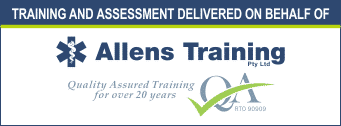Have you ever watched a movie and wondered, “Is that really how first aid works?” Hollywood often takes liberties with reality, especially in high-stakes emergency scenes, leading to some pretty big first aid fails. As first aid training experts we’ll break down some famous movie moments and see what they get right—and where they fall short.
Hitch’s Allergic Reaction: A Real-Life Threat
Remember the hilarious scene in Hitch where Will Smith’s character’s face swells up like a balloon after an allergic reaction? While it’s played for laughs, in real life, such a severe reaction could be life-threatening.
In the movie, he downs some antihistamines and seems fine. In reality, if someone’s face swells up that much, you’d need to use an EpiPen immediately and get them to a hospital. Antihistamines alone wouldn’t cut it. Swift action is critical because anaphylaxis can escalate quickly, affecting breathing and potentially leading to death.
Real-Life First Aid for Allergic Reactions
- Identify Symptoms: Severe signs such as swelling of the face and throat and difficulty breathing means you need to take urgent action.
- Use an EpiPen: Inject the EpiPen into the outer thigh. Hold it in place for at least 3 seconds to ensure the medication is fully delivered.
- Call Emergency Services: Even if the person seems better after the EpiPen, they need to go to the hospital. Anaphylaxis can recur, and further medical treatment may be necessary.
E.T.’s CPR: Almost There, But Not Quite
In E.T., the scene where Elliott performs CPR on E.T. is both heartwarming and…well, a bit inaccurate. While the use of a defibrillator is spot on (yay for that!), the CPR technique leaves much to be desired.
The chest compressions are shallow and not nearly deep enough. Effective CPR requires compressions of about 5-6 cm (2-2.5 inches) deep. Most people don’t give deep enough CPR and it’s one of the most common problems. Mabye they didn’t need to go so deep because of his alien physiology.
Correct CPR Technique
- Position: Place the person on their back on a firm surface.
- Hand Placement: Put the heel of one hand on the center of the chest, with the other hand on top, interlocking your fingers.
- Compressions: Press down hard and fast, aiming for 5-6 cm deep compressions at a rate of 100-120 per minute.
- Rescue Breaths: If trained, give 2 rescue breaths after every 30 compressions. Tilt the head back, lift the chin, pinch the nose, and breathe into their mouth.
San Andreas: Nose Pinch Fail
In the movie San Andreas, there’s an intense scene where a character performs CPR but forgets to pinch the nose while giving rescue breaths. This is a critical step in ensuring the breath goes into the lungs rather than escaping through the nose.
Correct Rescue Breathing Technique
- Open Airway: Tilt the head back and lift the chin to open the airway.
- Pinch the Nose: Pinch the person’s nose shut to prevent air from escaping.
- Seal the Mouth: Place your mouth over theirs, creating a seal.
- Give Breaths: Give two steady breaths, watching for the chest to rise. Each breath should last about one second.
The Importance of First Aid Training
These movie moments highlight why proper first aid training is so crucial. In real life, you don’t have a director shouting “cut!” if something goes wrong. Being prepared with the right knowledge and skills can make a real difference.
At My First Aid Course Brisbane, our training goes beyond what you see on the big screen. Here’s what you can expect at a First Aid course
- CPR Techniques: Learn how to perform CPR correctly, including the right depth and rate of compressions. You’ll also practice on mannequins to get a real feel for the process.
- Using a Defibrillator: Know when and how to use a defibrillator, a vital skill in cardiac emergencies.
- Handling Allergic Reactions: Understand how to recognize and respond to anaphylaxis, including the proper use of an EpiPen.
- Real-Life Scenarios: Our hands-on practice includes simulations of common emergencies, helping you gain confidence in your skills.
Making a Real Difference
First aid training can literally be the difference between life and death. It equips you to handle situations like choking, severe bleeding, heart attacks, and more. Imagine the peace of mind knowing you can provide immediate assistance until professional help arrives.






